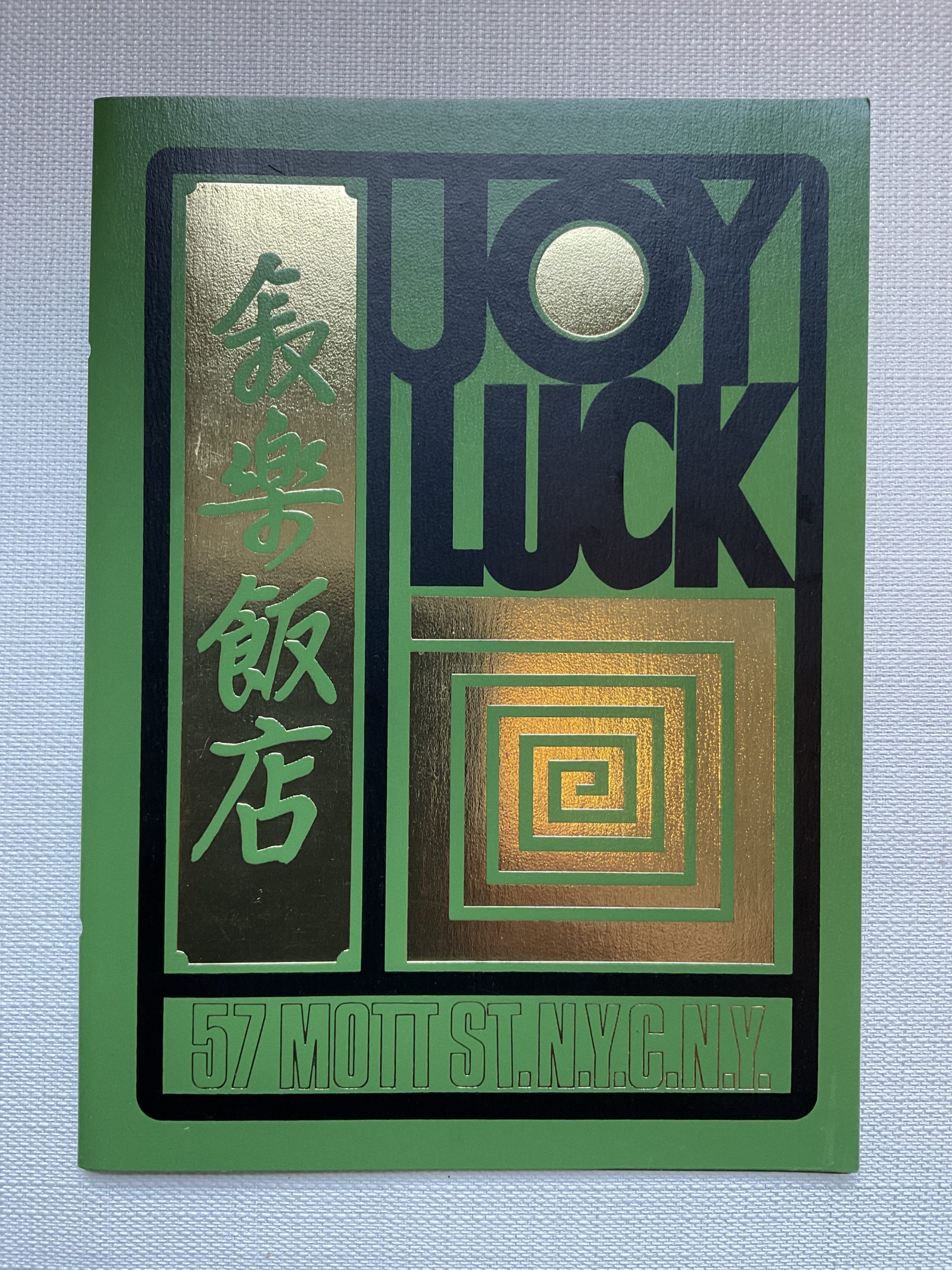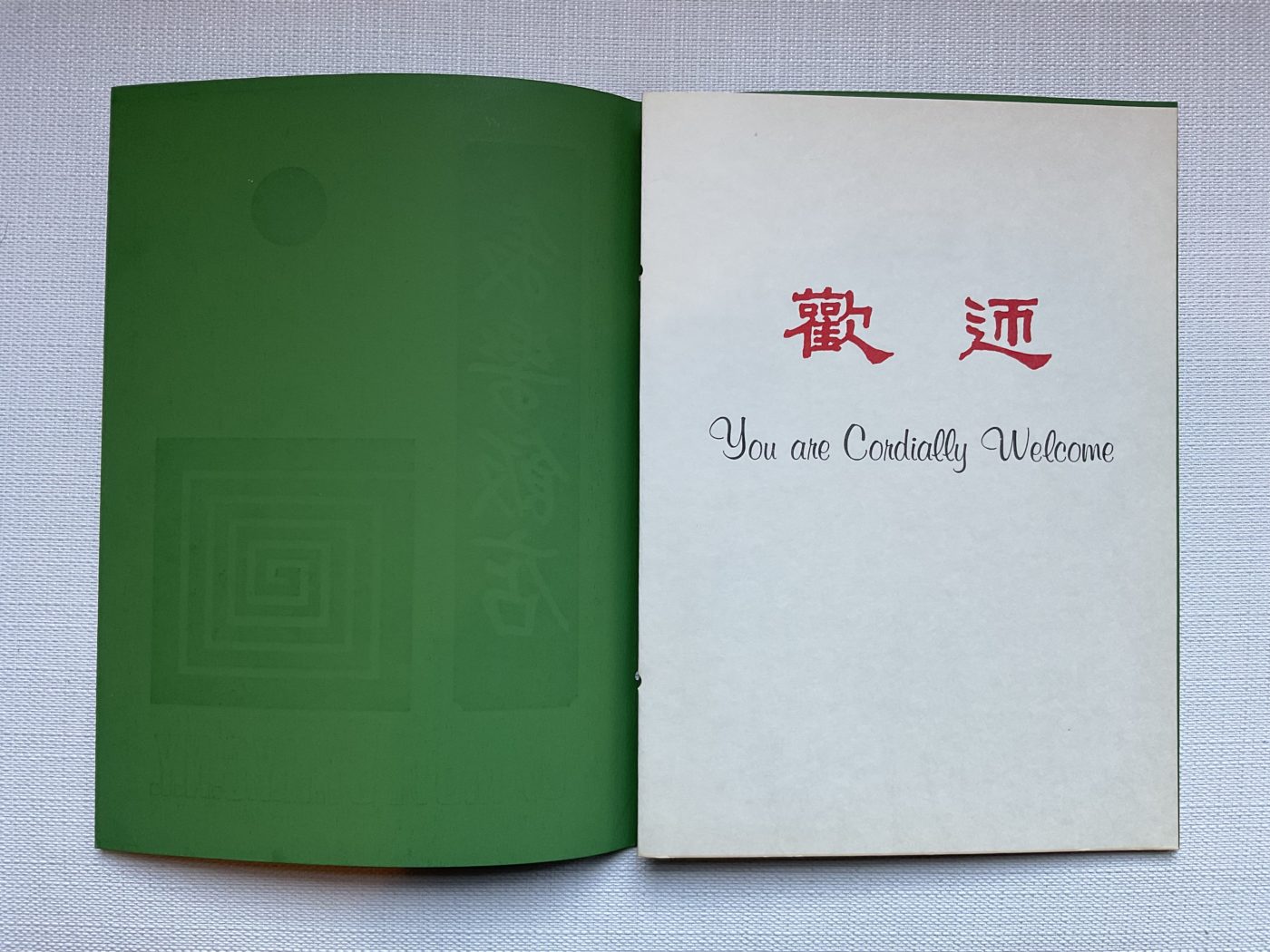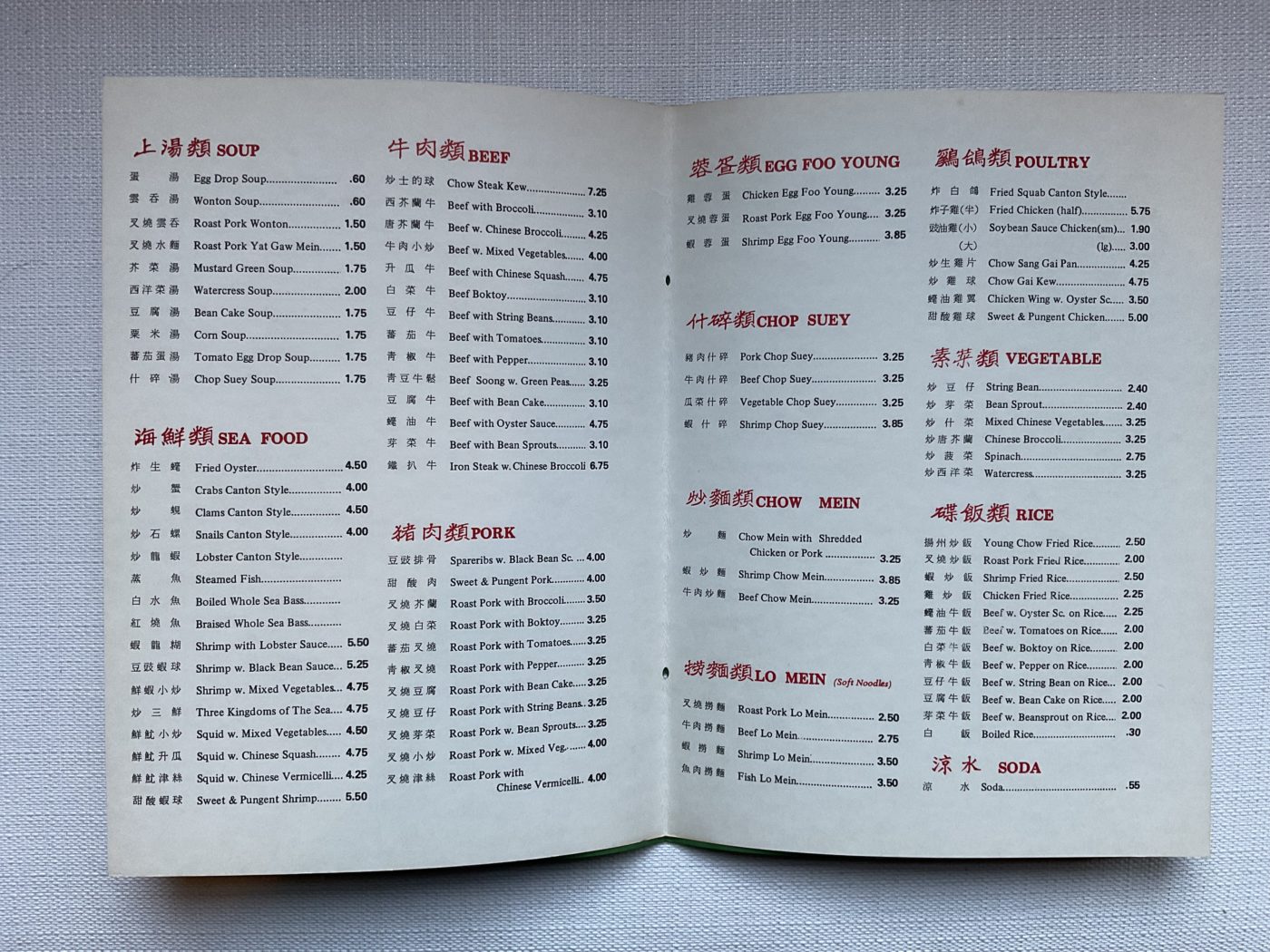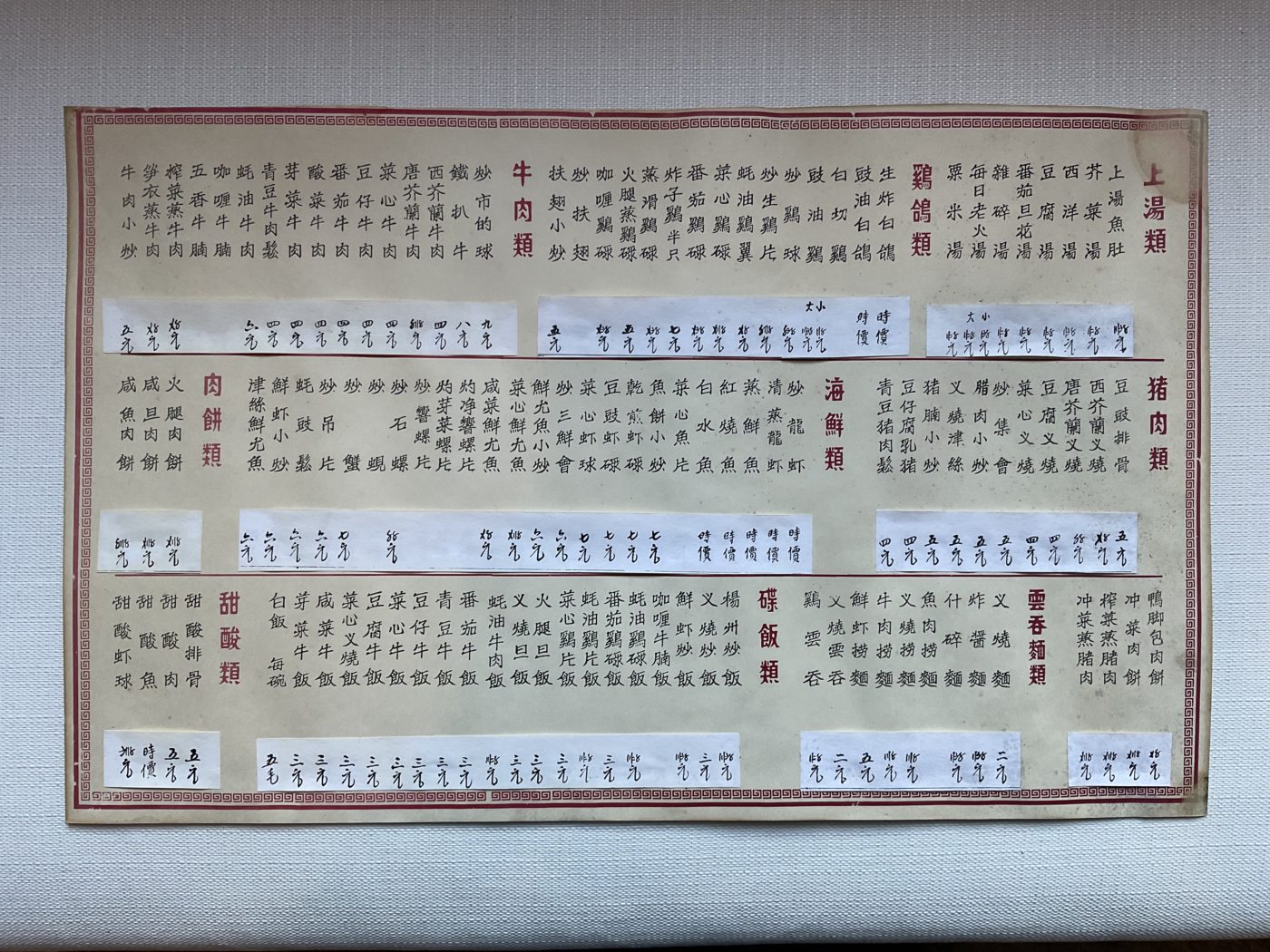This week, we feature two menus from the Joy Luck Restaurant which was formerly located at 57 Mott Street. This is a wonderful supplement to our existing Joy Luck Restaurant Sign which is currently undergoing restoration thanks to the Leung family who originally owned this restaurant. These particular menu items were donated by Pearl Leung, and they provide us with a glimpse of some of the cultural customs that were carried over by Chinese immigrants.
Joy Luck Restaurant Menus

Table Menu
The table menu is bound in a beautiful green vinyl cover featuring the name of the restaurant in both English and Chinese as well as the address in gold-bordered green letters. The contents of the menu feature two full pages of Cantonese-style dishes, with both Chinese and English dish names. Interestingly the translations into English leave hints of the Taishan dialect intact. For example, Beef and Bok Choy is translated in this menu as Beef “Boktoy”, which is a distinct way of saying “Bok Choy” in the Taishan dialect.
Wall Menu
The wall menu also shares some unique features that are seen in Cantonese restaurants and marketplaces. As one can see, the prices on some items are written in a way that is different from the standard numerals that we would associate with modern Chinese. This style is known as the Suzhou numerals system or “Hua Ma” (花碼) and this style of pricing was commonplace as a shorthand system of writing for accounting/bookkeeping and in marketplaces and restaurants. It has been gradually phased out in favor of standard Chinese numerals or even just Arabic numerals but there are still some places that continue this practice, especially in Hong Kong.
The menu has pricing for many of the items in this Suzhou style with 〤and〥 being prominent all over the list. A menu item combining these characters can be implied to cost a certain dollar amount followed by cents. So an item written 〤〥 would mean that the dish is $4.50 in this context, although the more formal way would be to include underneath in writing the order of magnitude to determine where the decimal goes. Using the same above example, the formal way of writing $4.50 would be 〤〥〇 followed by 十元 to note that the decimal place is in the tens, thus making it 〤.〥〇 or 4.50.


